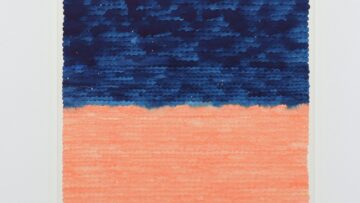Written by ART Driven Tokyo

Courtesy of the artist and TomuraLee
Reflections of Japan, a solo exhibition by world-traveling British artist Emma Thompson-Chaplin, is on view at TomuraLee in Ginza, Tokyo, through December 23, 2023.
While staying in Japan on business, she discovered a minimalist beauty and interest in the walls and tiles of buildings. The paintings, mostly in acrylic paint, conveyed the artist’s delight in discovery, and I was energized by the artist’s love of minimalism and digital technology.
Aliens in the Window? Fun to Imagine

Courtesy of the artist and TomuraLee
Objects become abstract when parts are cut out. The artist abstracted and reconstructed objects in the real world.
From my point of view as a Japanese, Japanese architecture was thought to be inorganic, lacking a sense of unity like old European townscapes, each seeming to appear on its own as it wished. However, from the viewpoint of the artist from Europe, the walls and tiles, which are representative of the inorganic nature of Japanese architecture, look warm and colorful.
I realized that there are considerable individual differences in color perception. The number of colors seen differs depending on gender, age, and nationality, and even when looking at the same color, there are individual differences.
There was also a project mapping installation. In the artist’s Instagram reel video, the work was accompanied by rhythmic and energetic music, as if aliens were having a fun party inside.
Looking at the windows, one can imagine people inside. Even if there are no people directly depicted in the paintings, the audience can imagine many things.
The texture is created not only by color, but also by gloss. By creating glossy and unglossy areas, a three-dimensional effect is created.
The view from the window is also a wall. Is Japan a small country filled with walls?
Is it the view outside seen from the window, or is the view reflected in the window?
The more I think about it, the more stories come to mind as to what is being expressed. The artist must be very interested in the Japanese landscape and the appearance of Japanese architecture.

Courtesy of the artist and TomuraLee

Courtesy of the artist and TomuraLee
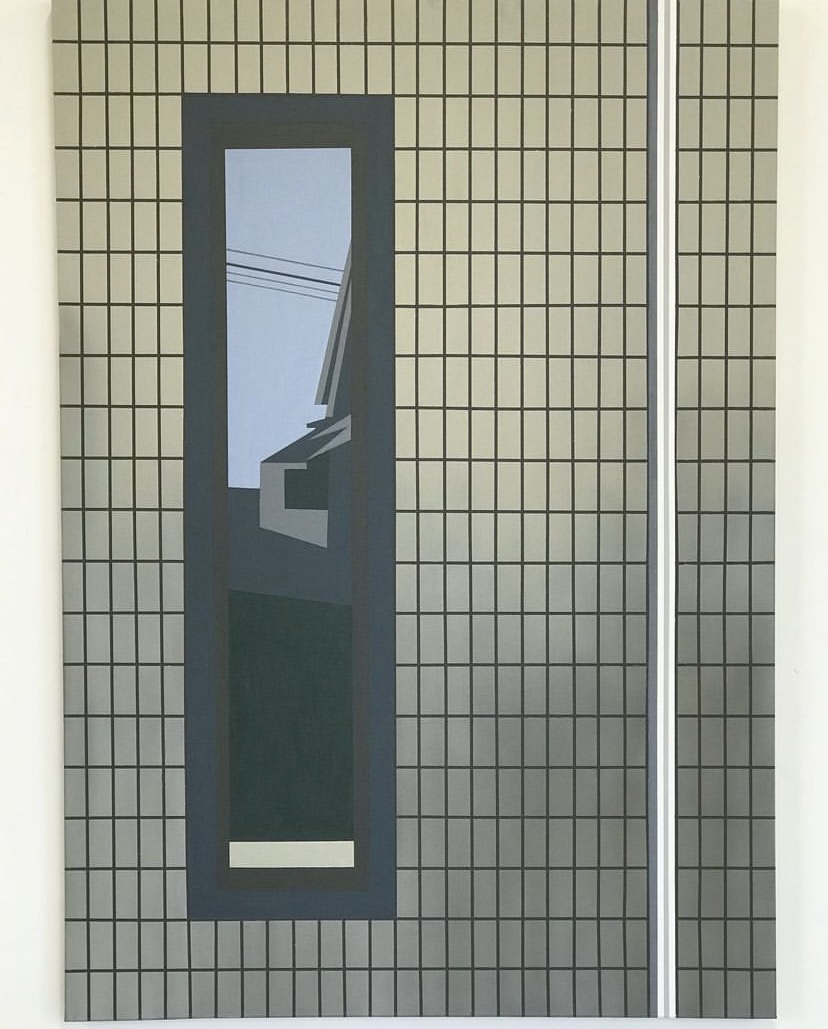
Courtesy of the artist and TomuraLee
Painting is Like a Window. Dramatic Expression of the Japanese Landscape
A painting can be compared to a window. The frame is the window frame and the painting is the landscape.
The frame is the boundary that separates the space within the picture from the real space outside. In the “On Painting” (1435) by Leon Battista Alberti, an artist of the early Renaissance, the artist likened painting to an “open window,” and the reproducibility of a painting painted using perspective was ensured by the “window” nature of the frame.
In this sense, does the artist see the Japanese landscape seen through the window as a painting? Is that why she thought it was interesting?
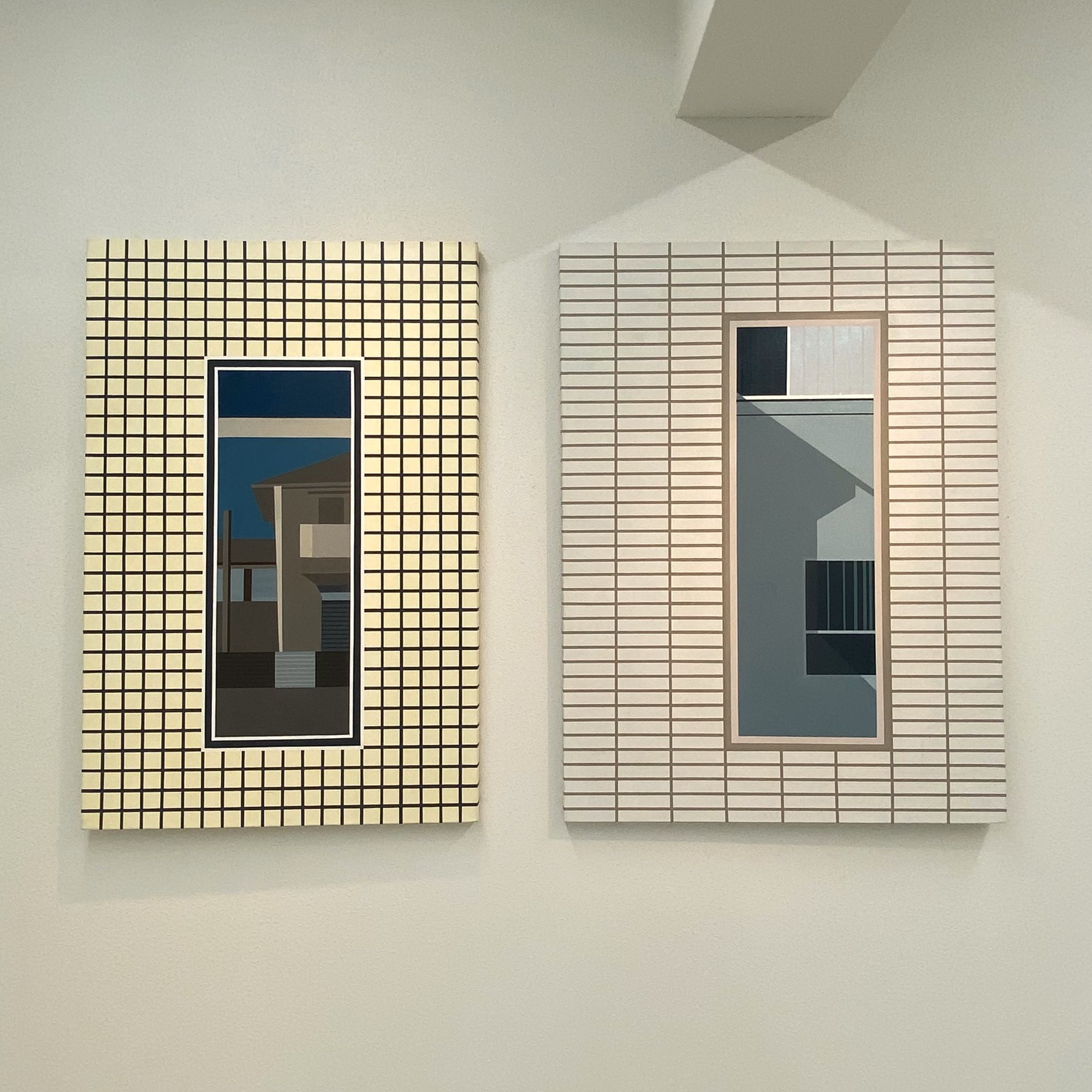
Courtesy of the artist and TomuraLee
The image is drawn by taking out a part of the image, but it is not a depiction of the image as it is. Did the artist use a posterization technique? Walls and tiles with continuous gradations are divided into several gradations according to lightness, darkness, and color.
By reducing the number of colors and adjusting the tones, a dramatic, illustration-like expression is achieved.
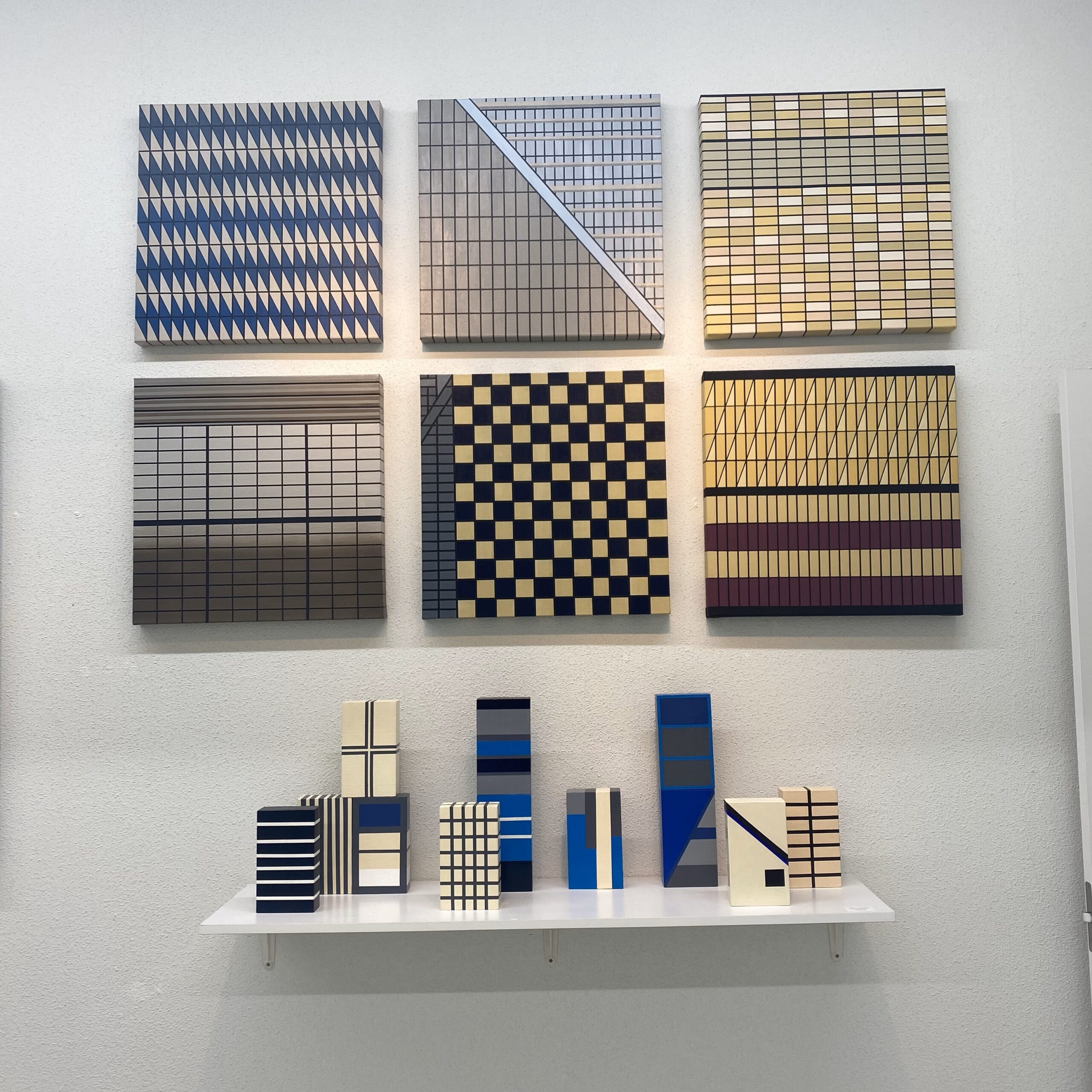
Courtesy of the artist and TomuraLee
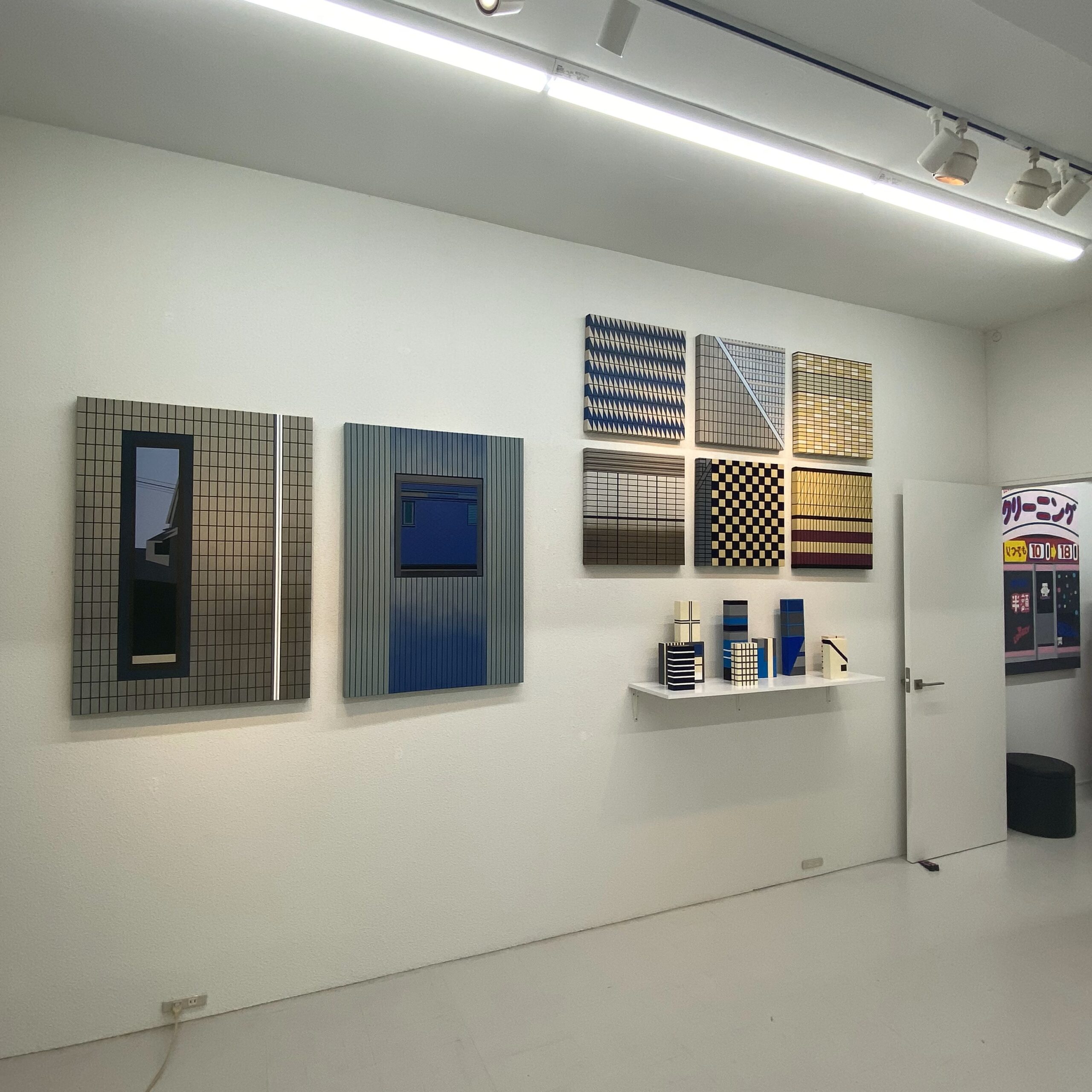
Courtesy of the artist and TomuraLee
Unified by Geometric Beauty, and a New Form of Minimalism is Spreading
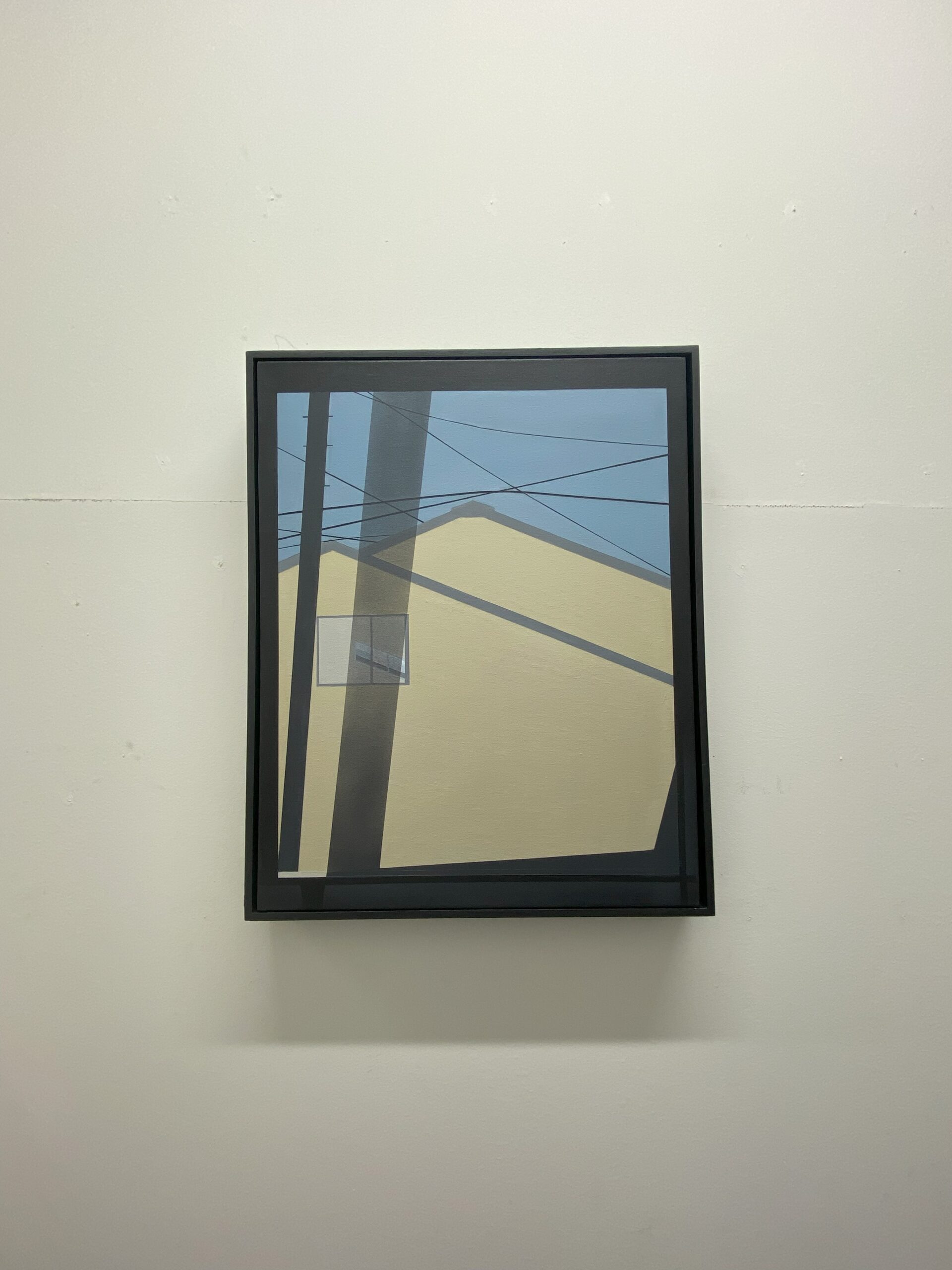
Courtesy of the artist and TomuraLee
Does the above work depict a landscape reflected in a window? What appears to be the shadow of utility poles is reflected on the wall of a house. Objects are transformed and simplified into geometric abstractions. Overall, the work is unified by geometric beauty, and a new form of minimalism is spreading.
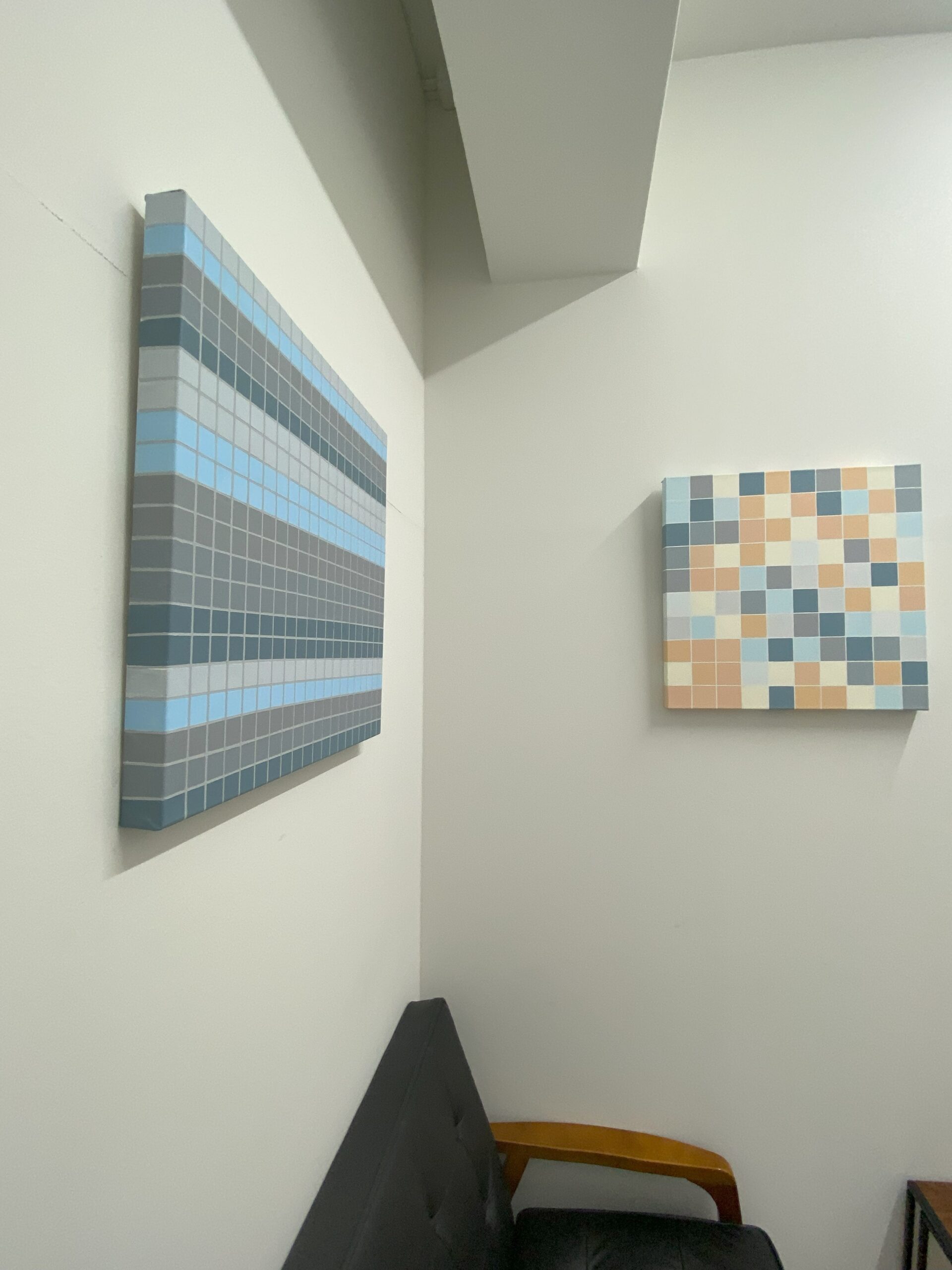
Courtesy of the artist and TomuraLee
On the way home, I spent some time looking up and down the streets of Ginza. I noticed that the sidewalks are also made of tiles and that Japan is full of tiles everywhere. And beyond these tiles and walls, people’s lives are alive.
Inspired by the artist’s imagination, it was an opportunity to reexamine and discover Japanese design, which the artist says is ” Rooted in Zen philosophy.”
Emma Thompson-Chaplin
Born in UK in 1975.
Loves minimalism and architecture. Traveled the world as an art teacher, creating works inspired by the places she has lived, loves AR, and creates digital art.
Below is a message from the artist.
Originally trained as an art teacher from the U.K., I’ve had the great fortune to work in some fantastic places including Australia, the Philippines, and Japan. Along the way, I developed a passion for digital art and gained a Master’s in Digital Media Design from Edinburgh University and an MA in Fine Arts. I have since worked on some truly inspiring projects while meeting many influential and creative individuals along the way. I love to bring my artwork to life, combining traditional with digital to make my paintings move through animation, motion graphics and augmented reality. I am currently fascinated by the urban modern landscape of Japan and its design aesthetics rooted in Zen philosophy and how this interconnects with the spiritual and ritual values of daily life.
Artist Website : https://www.emmathompsonchaplin.com/
Instagram: @emmatompsonchaplin
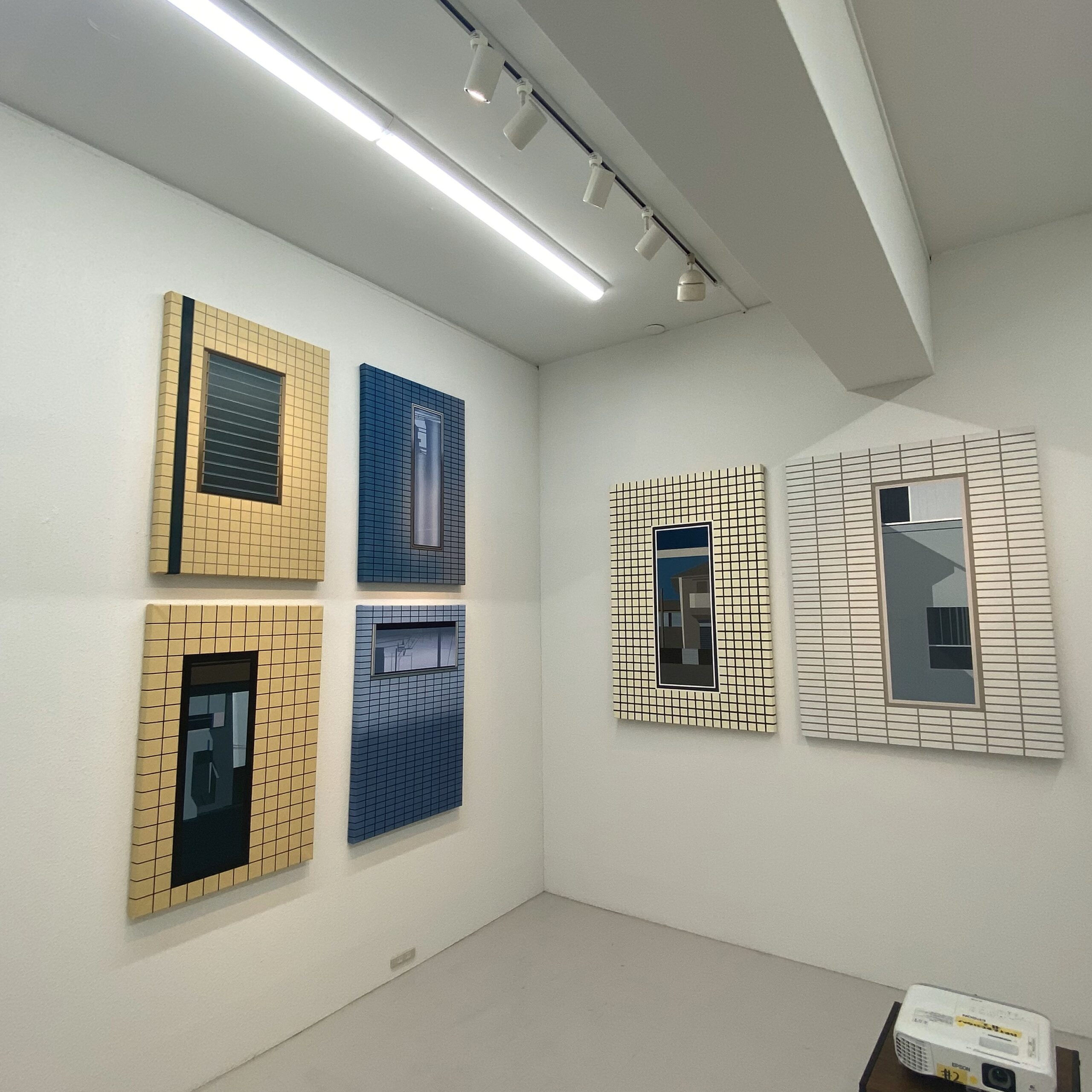
Courtesy of the artist and TomuraLee
Exhibition Overview
Title: Emma Thompson Solo Exhibition Reflections of Japan
Period: 2023. 12. 8 [Fri.] – 12. 23 [Sat.] The exhibition ended.
Venue: TomuraLee, Bunsei bldgs #603, 3-9-4 Ginza, Chuo-ku, Tokyo 104-0061, JAPAN
5 min. walk from Ginza Station
3 min. walk from Higashi-Ginza station
CONTACT: Tel +81 3 6264 2536
For general inquiries, please email info@tomuralee.com
HOURS: 10:30am – 6:30pm [Sat – 6pm]
Closed: Sunday,Monday and National Holidays



